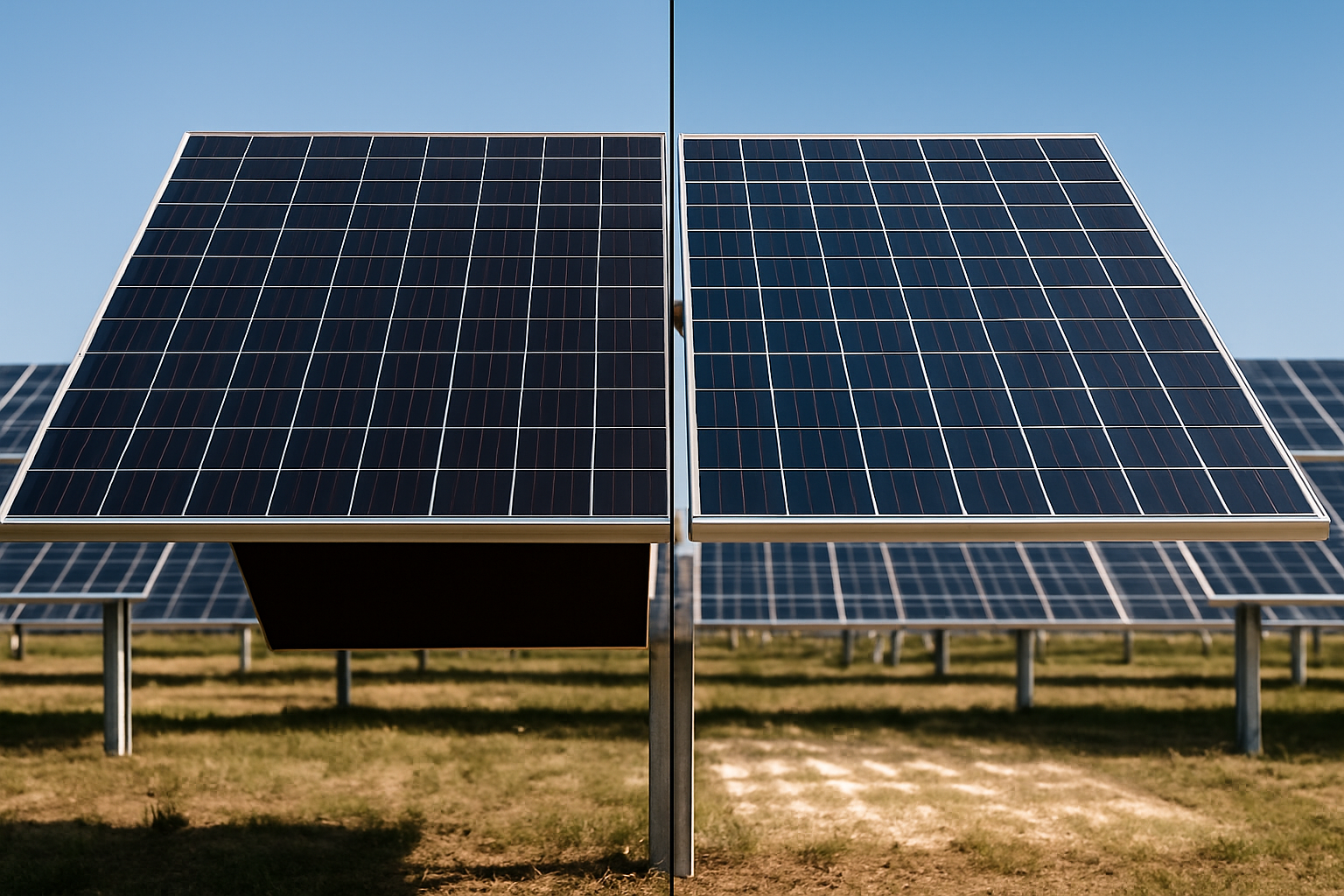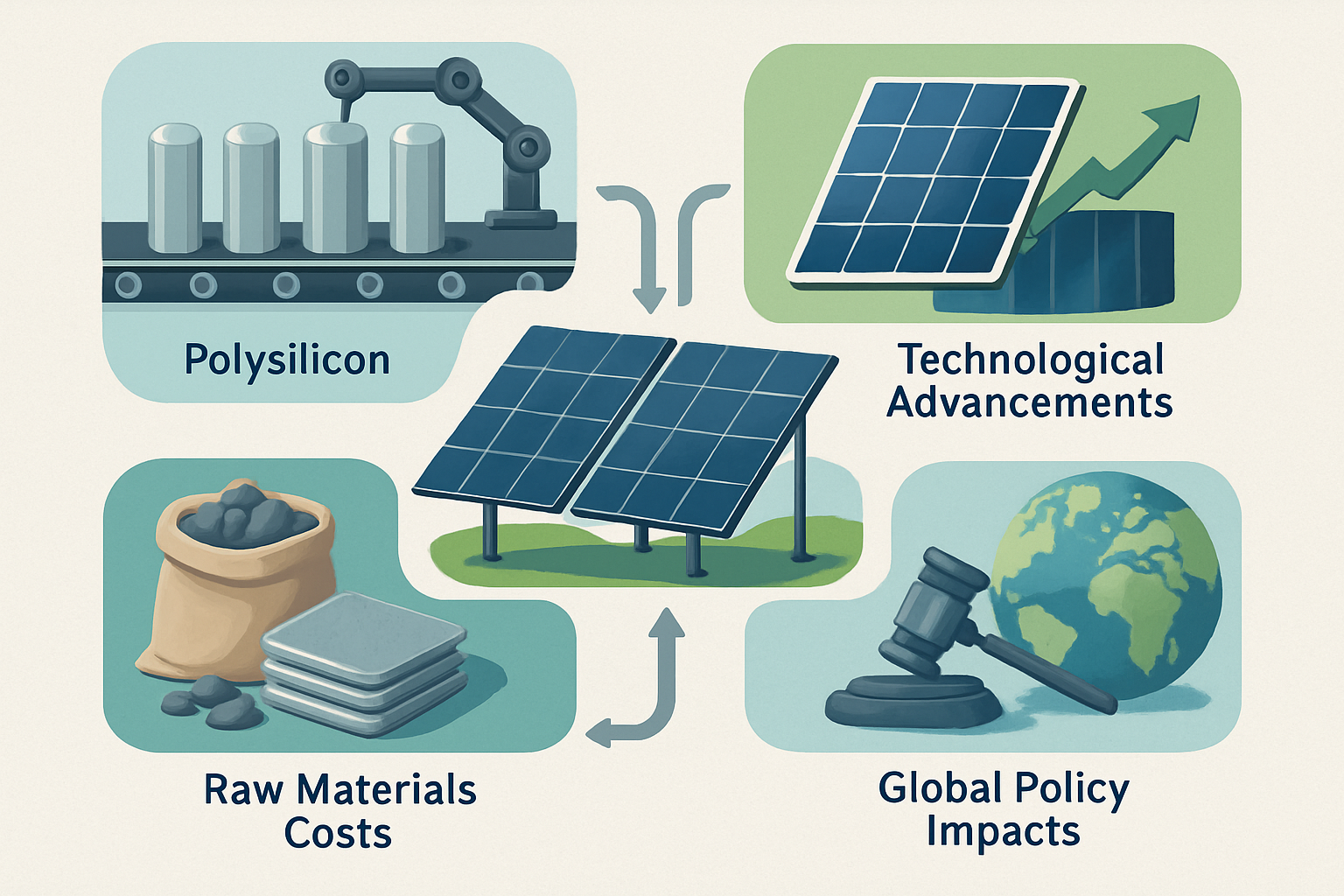Investing in solar energy represents a commitment to a sustainable future. To truly realize the long-term benefits of this investment, understanding system reliability is paramount. Advanced solar photovoltaic (PV) systems, particularly those combining trackers with bifacial modules, offer significant energy yield advantages. However, maximizing their performance over decades requires a thoughtful approach to design, materials, and operational strategies. This blueprint outlines key considerations for building a robust and dependable tracker plus bifacial PV system, ensuring consistent energy production and lasting value.
The Synergy of Trackers and Bifacial Technology
Combining solar trackers with bifacial PV modules creates a powerful synergy, significantly boosting energy capture. Trackers continuously adjust the orientation of solar panels to follow the sun's path across the sky, optimizing the angle at which sunlight strikes the module surface. Bifacial modules enhance this by collecting sunlight not only from their front side but also from reflected light on their rear side.
Maximizing Energy Capture
Single-axis trackers are widely adopted in utility-scale PV systems, and they effectively increase the amount of light reaching modules . This technology, when paired with bifacial modules, offers substantial energy yield benefits. Bifacial modules can deliver 10-30% more energy than traditional monofacial counterparts, especially in environments with high ground reflectivity (albedo) . The gains from trackers, typically 15% to 20%, and bifacial gains of 2% to 10% are additive, leading to a convincing cost-performance ratio and the lowest levelized cost of electricity (LCOE) for many installations .
Between 2010 and 2024, the global weighted average capacity factor for new, utility-scale solar PV increased from 15% to 17.4%. This increase is partly attributed to the expanded use of trackers, driven by increased adoption of bifacial technologies, alongside evolving inverter load ratios and overpaneling ratios, and a shift in average market irradiance.
Design Considerations for Enhanced Performance
Optimizing the design of tracker plus bifacial systems is crucial for maximizing energy output. Factors such as row spacing, the height of modules above the ground, tracker design, module layout, and ground cover reflectivity all influence the energy output of bifacial systems . Careful consideration of these parameters, in tandem with module selection, can further boost system performance . For instance, increasing albedo through specific ground covers can significantly enhance rear-side light capture.
Despite the clear advantages, yield prediction models for bifacial tracked systems still require improvement. A comparison study demonstrated up to a 100% difference between rear-side irradiance predictions across various models and participants. This highlights the need for more high-quality, validated datasets to ensure consistent and accurate models .
Addressing Common Reliability Challenges
Even with advanced technology, solar PV systems encounter various challenges that can affect their long-term reliability and energy production. Proactive strategies are essential to mitigate these issues.
Minimizing Availability Loss
Availability loss occurs when a system is not producing power due to a fault, necessary repair, or scheduled maintenance . Improving component reliability can significantly reduce this loss by preventing faults and decreasing the need for repairs. Inverters, for example, can trip due to ground faults or arc faults. Reducing the incidence of these faults and improving inverter and system design to eliminate false trips directly increases system availability .
Regular maintenance practices and a robust design can also decrease the degradation rate caused by shading effects .
Combating Mismatch Loss
Mismatch loss happens when interconnected PV modules operate at different electrical conditions due to variations in initial performance, uneven degradation, or differing amounts of sunlight . This forces modules to operate below their optimal power point, leading to energy loss . In residential PV systems, module-level power electronics (MLPE), such as microinverters or DC power optimizers, effectively address this by allowing each module to operate independently at its maximum power point .
For larger systems, technologies like the String Power Optimizer and Transmitter (SPOT) offer a solution. This DC-DC optimizer converts voltage for each PV string, connecting uneven low-voltage strings to a common high-voltage DC bus. It maximizes power output, improves fault tolerance through galvanic isolation (allowing isolation of affected modules for repair while the rest of the system operates), and provides real-time monitoring. When retrofitted to older PV systems, the SPOT has increased production by 5% to 15% without requiring new PV modules . This technology also offers cost-effectiveness by increasing voltage with less copper and enables efficient DC coupling in solar-plus-storage applications, requiring only one inverter .
Material Science and System Longevity
The durability of PV systems heavily relies on the materials used in their construction and their ability to withstand environmental stressors over time.
Innovations in Module Components
Beyond the solar cells themselves, PV modules consist mainly of glass and polymers. While these materials are already cost-effective, further reductions are possible through innovations like thinner glass or the substitution of glass, which can lower material and shipping costs. Replacing sophisticated polymers with simpler alternatives, without compromising performance, also presents an opportunity for cost savings .
Newer technologies, such as perovskite solar cells, have achieved record laboratory efficiencies comparable to conventional silicon cells. However, long-term durability remains a principal challenge, as perovskite cells are more susceptible to damage from moisture and ultraviolet light . Research and development in material science, including efforts by the Durable Module Materials Consortium, are crucial for accelerating the deployment of high-performance, durable materials for PV modules .
Environmental Resilience and Degradation
PV modules in the field face a variety of environmental conditions, including thermal cycling, humidity, UV exposure, corrosion, hail, wind, and snow . Tailoring the resistance of PV modules and systems to their specific environment can reduce costs without compromising longevity. According to research presented at the Photovoltaic Module Reliability Workshop 2013, understanding these environmental interactions is key .
The median PV loss rate for solar panels is around 0.5% to 0.8% per year, though this can be higher in hotter climates . Thin-film technologies, such as Cadmium Telluride (CdTe), have demonstrated low degradation rates, with some claiming as low as 0.5% per year across various climates .
Manufacturers offer product warranties typically exceeding 10 years and power warranties for 20-30 years, reflecting the expected long service lifetime of PV modules . Rigorous testing, including advanced standards like Qualification Plus, ensures durability and performance in diverse environments.
Strategic System Integration for Durable Performance
Achieving a truly reliable and high-performing solar energy system involves more than just selecting quality components; it requires strategic integration of various technologies and a focus on overall system economics.
The Role of Energy Storage
Utility-scale solar PV installations are increasingly being paired with battery storage, creating hybrid systems that enhance grid reliability and flexibility . Energy storage systems (ESS) are vital for integrating variable renewable energy, improving asset performance, and enhancing grid responsiveness . The cost of battery storage has seen a dramatic decline, falling by 93% from 2010 to 2024, reaching $192/kWh for utility-scale systems . This makes integrating reliable lithium iron phosphate (LiFePO4) battery technology into solar systems a financially attractive option for achieving energy independence.
Optimizing Balance-of-System Costs
Balance-of-system (BoS) costs, which exclude modules and inverters, constituted approximately 65% of the total installed costs for utility-scale PV plants in 2024 . Optimizing these costs is crucial for the overall economic viability of solar projects. This involves careful planning of mounting structures, wiring, electrical components, and labor. By focusing on efficient design and reliable, long-lasting components, system owners can reduce both upfront capital expenditures and long-term operational and maintenance costs.
Forging a Reliable Future
Building a reliable tracker plus bifacial PV system requires a holistic approach, encompassing advanced technology, robust materials, and intelligent system design. By leveraging the synergistic benefits of trackers and bifacial modules, meticulously addressing potential losses, and integrating proven energy storage solutions, you can create a solar asset that delivers predictable performance and substantial energy yield for decades. Focusing on these elements ensures your investment contributes to lasting energy independence and a sustainable future.
Frequently Asked Questions
What is a reliability blueprint for solar systems?
A reliability blueprint outlines the strategic design, material selection, and operational practices necessary to ensure a solar PV system consistently performs as expected over its entire service lifetime. It focuses on minimizing failures, degradation, and downtime to maximize energy production and economic returns.
How do trackers improve bifacial PV system reliability?
Trackers enhance reliability by optimizing sun exposure, which can lead to more consistent power output and potentially reduce thermal stress on modules compared to static systems. By following the sun, they help maintain more uniform operating conditions across the module surface, contributing to overall system health and longevity.
What role does material science play in PV system longevity?
Material science is fundamental to PV system longevity. Durable materials for module components like glass and polymers protect solar cells from environmental damage. Innovations in these materials, alongside advancements in cell technology, directly impact a module's resistance to degradation from factors such as moisture, UV light, and temperature fluctuations, thereby extending its operational life.
Can energy storage enhance the reliability of tracker plus bifacial systems?
Yes, energy storage significantly enhances the reliability of tracker plus bifacial systems. By storing excess solar energy, it provides a buffer against intermittency, ensures power availability during peak demand or low solar production, and contributes to grid stability. This integration creates a more resilient and dependable energy solution, helping you achieve greater energy independence.




Leave a comment
All comments are moderated before being published.
This site is protected by hCaptcha and the hCaptcha Privacy Policy and Terms of Service apply.